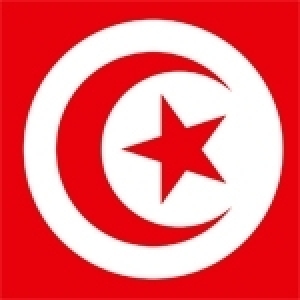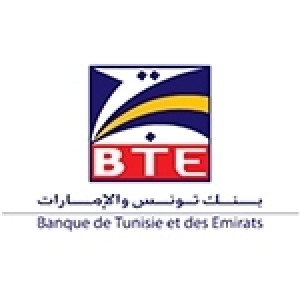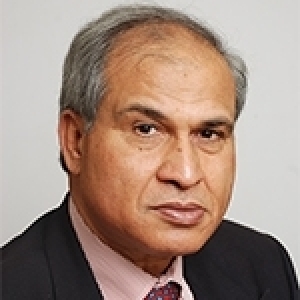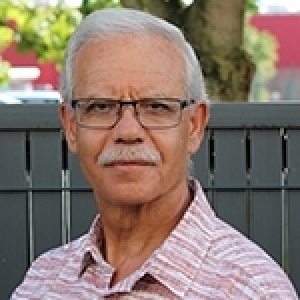Jelel Ezzine: Saving the University from Itself
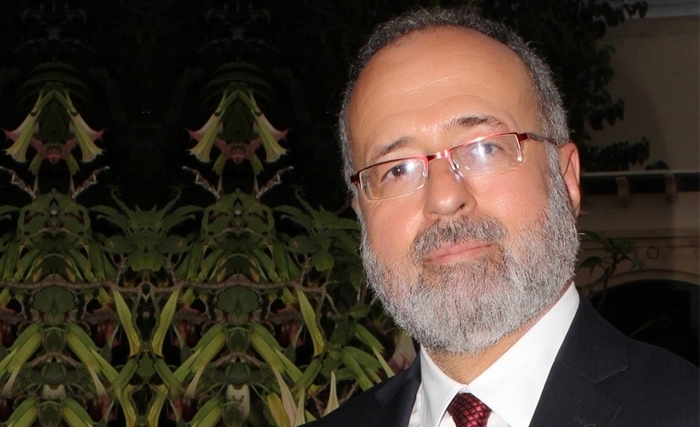
Main highlights
• Up to 2 billion TND in hard currency, including an increase in the budget of the national higher education system up to 66% of the MESRS budget.
• Full autonomy and internationalization of our universities according to international standards, in particular the European ones.
• Transform the ATCT to the “Tunisian Agency for International Cooperation” (ATCI) with an increase in its budget to carry out its new internationalization mission.
• Rename ISETSs “Regional Polytechnics Institutes” (IPRs) and allow them, in addition to their original mission, to teach first year university courses.
• Create quality jobs for unemployed university graduates, and Ph.D. holders.
Introduction
"C'est plus facile de réclamer la richesse à d'autres que de la créer soi-même." -- H. Bourguiba.
Deepening underdevelopment is the only development witnessed in post-revolution Tunisia! Hostage to its political system and its architects, the country continues to sink deeper in its bleak and strange sociopolitical trap. Unproductive loans are drowning the economy and embarking our future generations on a dark journey across uncertain futures. Crony assignments at all levels of the government and administration are bleeding white our state from its capabilities and expertise to keep the country afloat. Unethical political power struggles are reducing politics to its Machiavellian dimension, obliterating public trust in politics, politicians, and even democracy.
This Kafkaesque state of affairs would have imposed changing the title of the article by replacing “University” with “Tunisia.” But, best to espouse a pedagogical approach and start with a far less complex but strategic sector, i.e., the University System. Even for this ailing sector, I will limit attention to universities’ governance. This is a deliberate and well-founded choice, for nothing useful could come out of our universities without overhauling the present centralized and inefficient governance system.
The promulgated and obstructed policies or projects are the telltale of our political reality. On the national level, and among the notorious examples, is the stalemate encountered by the establishment of the Constitutional Court. On the Higher Education level, we can mention at least the controversial University Teachers Statute and the disputed UFTAM.
As to the Constitutional Court, and because of the power shift caused by its absence, those who delayed it are trying hard to speed up its institutionalization to no avail. The University Teachers Statute is encountering fierce resistance from those who will endure it. The stakeholders deplore the lack of a sound procedure in devising the new statute. During the recent Franco-Tunisian High Council for Cooperation meeting, they put the UFTAM back on the asymmetric negotiations table.
The above lingering challenges result from the decades-long absence of academic training and research in evidence-based public policy analysis. Sound design, implementation, and monitoring, along with reviews of these policies, are missing. These are the fingerprints of a post-autocratic political system favoring open-loop governance to maintain control. I wrote about this unfortunate situation elsewhere.
Universities: From dependence to autonomy
“We will find a way, or we shall make one.” — Hannibal
If one thinks of the teachers of any education system as a beehive, the university would be its Queen Bee. Indeed, it is the university that trains all teachers. Be it for primary schools, secondary ones, or even the faculty of the university itself and beyond. Thus, the education quality of the university or the lack of it reverberates throughout society not only through teachers and faculty but also through parents, family members, and friends. This article shows how to regenerate the hive by replacing the incapacitated Queen Bee with her strongest daughter and inaugurate a golden age of our national education system?
Before describing the new governance system of a truly autonomous university, it is important to dispel a harmful old myth. All of our official documents, appointees’ speeches, and everyday chats refer to a national higher education system that includes 13 universities headed by 13 Presidents! In reality, this is nothing but a blatant myth. Since 1969, Tunisian higher education system has comprised one university headed by the Minister for Higher Education and Scientific Research (MESRS). The so-called University Presidents, with all due respect, are nothing but a pretense notwithstanding their theatrical elections.
The higher education and research system got trapped in a frigid state, notwithstanding a few nudges, perpetuating a stagnation of the system forcing it into dangerous devolution dynamics. Our higher education and research system got stunted and is therefore decades behind its normal development path.
Systems science teaches us that self-organizing systems tend to higher levels of complexity by changing their internal structures and consequently their function in response to outside circumstances. For instance, in biology, cellular division (mitosis) and differentiation are fundamental cycles in producing and maintaining complex organisms. With our higher education and research system we stopped at mitosis, i.e., the 13 universities, but failed to proceed to the important cycle of differentiation. In the sequel, I propose a blueprint for allowing our universities to complete their cycles.
The proposed transformation aims primarily to autonomize and strengthen our universities and facilitate their internationalization. This vision needs more than setting quantitative goals, it requires the assembly of a minimal ecosystem capable of ensuring the sustainability of the entire system. This holistic approach will include, at least, the universities, the ISETSs, the ATCT, and the MESRS and its agencies. We should ensure that these transformations positively affect the private universities.
Matching opportunities with audacious innovations
The 2008/2009 academic year saw a record enrollment of 360 thousands university students. In 2020, student enrollment decreased to about 230 thousands, almost the same enrollment level at the beginning of the millennium. This decrease of about 130 thousands students is a unique opportunity for our higher education system and for our country. We can take advantage of this available enrollment capacity by internationalizing our universities and thus create a competitive and lucrative national higher education industry.
It is important to know that the global higher education market size was USD 1,090.87 billion in 2019 and expected to reach USD 2,367.51 billion by 2027. This unprecedented projected growth could be a significant contributor to economic development and national wealth growth for countries willing to invest and build this strategic sector. It is also worth stressing that the Covid-19 pandemic catapulted online learning, stressing the importance of connectivity, online learning platforms, and collaborative learning. Countries willing to be winning active players in this exploding market should entice their governments and decision-makers to conceive initiatives capable of claiming part of the pie.
We aim at 100 thousand international students in five to ten years, from Africa and the MENA region. We also expect a conservative yearly average total expenditure (university fees plus living expenses) per student between 10 to 20 thousand TND. These expenditures will contribute one to two billion TND in hard currency to the Tunisian economy, which is about 10% of the expected borrowing for 2021. Assuming the fees correspond to 50% of the students’ expenditure, 500 Million to 1 Billion TND will be injected into our higher education ecosystem. This amount corresponds to 66% of the MESRS budget.
Enabling developmental autonomy
Obviously, the above conservative financial estimates won’t just fall from the sky while continuing to do what we have been doing for the last five decades. That is a growing complicated, even conflictual, and aimless higher education policy patchwork. Indeed, taking advantage of this potential requires an out-of-the-box bold vision, a long-term engagement, and a systemic partnership between several institutions within and beyond the higher education sector.
Interestingly enough, these financial gains won’t require much if any financial investments. This might sound like a dream. But as explained below it just calls for collective courage, a coherent action plan, and authentic cooperation between all concerned stakeholders making up the ecosystem to be.
The structure of the novel higher education ecosystem
he draft diagram below represents the key components of the suggested higher education ecosystem, its different linkages, and thus its structure. I will define the numbered five components and describe their essential features below. I will discuss the remaining components as need be to clarify the overall desired ambition of the ecosystem.
.jpg)
Autonomous universities
As usually claimed, our higher education system includes 13 universities. However, these universities are formal institutions devoid of the fundamental characteristics of autonomy. This section proposes an appropriate autonomy framework for our universities in harmony with the LMD system and compatible with the EU higher education system. The needed complementary subsystems and agencies, described in the sequel, will incur minimal expenses, since the new institutions are transformations and/or redeployment of existing ones including their staff.
University autonomy à la EAU (1)
In order to compete in the global higher education market, the universities need to differentiate, espouse an efficient governance system, and contribute to the development of society and the betterment of people’s well-being. The European University Association (EUA)’s Lisbon Declaration (2007) did set out four dimensions of university autonomy:
1. Academic autonomy (7 indicators),
2. Financial autonomy, 11 indicators),
3. Organizational autonomy (8 indicators), and
4. Staffing autonomy (12 indicators).
The EUA also provides an Autonomy Scorecard Platform that produces an accurate picture of the autonomy of the European institutions in 29 European countries. The latest (2016) available autonomy rankings provide the following illustrative results, UK (1st, 3rd, 3rd, 3rd), Estonia (5th, 4th, 1st, 1st), and France (20th, 24th, 27th, 27th).
The present national regulations, including the EPST status, don’t rise to the autonomy needed to enhance the performance of our universities and allow them to become regional tertiary education destinations. In fact, the staffing autonomy dimension doesn’t apply. This truncated governance system has handicapped the development of our universities. It will certainly prevent them from becoming competitive regional players capable of attracting international students and thus claim their shares of the global higher education market.
Therefore, I strongly recommended giving autonomy to our readiest universities. The University of Tunis El Manar (UTM) and the University of Sfax can govern their institutions following a viable autonomy framework according to EUA standards. Meanwhile, we should assist the remaining universities and institutions, as presented below, to join according to their readiness and as we learn from the experiences of the two pioneering universities.
ATCI the new ATCT (2)
It is necessary to give autonomy to our universities to empower our higher education industry and give it the means to become a leading player in the regional higher education market. Autonomy is not sufficient unless we boost the national higher education system by a strong and efficient international cooperation agency. The Tunisian Agency for International Cooperation (ATCI), will attract international students and offer scholarships to talented candidates to pursue their university studies in our country.
ATCI restructured ATCT with an additional international higher education cooperation mission, including extra funds. The financial supplement should come from the fees of registered international students. The latter new mission should also include the facilitation of the stay of the international students during their studies, starting with obtaining and managing Students’ and short-term working visas.
Restructure parts of the MESRS to fit the new mission (3)
To successfully perform this new mission, the MESRS has to optimize part of its organigram in order to fit its new internationalization mission. First, it is most natural to assign the mission of internationalization to the DGRU. We should transfer the duties and projects of the DGRU, as common sense would dictate, to the Doctoral Schools Directorate of the DGRS. Second, eliminate the redundant DGVR and transfer its projects to where it belongs, i.e., the ANPR. Finally, we should reassign the concerned staff, especially those of the DGVR. We could also envisage reskilling the Ph.D. holders and university graduates to respond to eventual staffing needs.
Regional Polytechnic Institutes (RPIs) an improved version of ISETs (4)
The ISETSs subsystem is a powerful asset for the nation and its higher education system. However, we missed making this system a lever to improve our education system. Not only did we give these institutions an improper denomination, but we also conceived them as if they were mini-engineering schools within the LMD system.
After making the name more attractive, we should integrate this subsystem into the new ecosystem and take advantage of its decentralized structure. The most important and fruitful recommendation to the RPIs and their respective regions is to allow these institutions to teach the first year of university courses. This new mission will save living and transport expenses for the local students and bring extra income to the institutions and their regions. The courses’ credits should be transferable. To facilitate credit transfer, the RPIs should sign agreements with target universities. In due time, the RPIs can open their courses to international students.
In addition, it is important for the RPIs to go back to their original mission of training qualified technicians for the benefit of their regional industries. In doing so, they will contribute to solving the regional job market mismatch between offer and demand. We should encourage the RPIs to build bridges between their departments, and their regional techno-economic environments. Such rapprochement will allow them to fine-tune their training to the changing needs of the local industries and play their developmental role.
The QAAA a quality assurance and accreditation agency (5)
The MESRS started an ambitious quality program called PAQ, fifteen years ago. This program developed well and is providing funds and opportunities to universities and institutions to master their quality processes.
Almost simultaneously, Law No. 2008-19 of 25 February 2008 on Higher Education promulgated the institution of the National Authority of Evaluation, Quality Assurance and Accreditation (IEAQA). It would be highly beneficial to align the appellation of this institution with international standards. I recommend calling it the Quality Assurance and Accreditation Agency (QAAA).
These two institutions should contribute to the success of the internationalization program. For efficiency’s sake, we should transfer the totality of the PAQ program, with the needed staff, to QAAA. We should also make QAAA autonomous so that it safeguards standards and improves quality away from any influence. It should also ensure students get the higher education they expect. The active role of the QAAA will give visibility, accountability and rigor to the higher education ecosystem and thus put it on equal footings with the competition.
Conclusion
At first sight, one could view this proposal as a risky undertaking. Not implementing such transformations will entail much higher risks. Lack of development, absence of trust, and reduced well-being are such risks.
Cybernetics teaches us, via its Requisite Variety Principle (RVP), that one can’t reduce complexity and thus can only apprehend it by at least as equal a complexity. Thus, one needs to first target low-hanging fruits, then start small-scale experiences, and keep learning by doing as one converges to the collective vision. I designed the previous section, which is my main proposal, with this approach in mind.
If we start right away, and we must, the needed policies to launch this program will be ready early this coming academic year. We should implement the preparatory transformations by the end of the coming academic year. The program should be up and running for 2022/2023 academic year with the University of El Manar (UTM) and the University of Sfax as our test beds.
The only potential obstacle to the success of this pilot project is political engagement. Indeed, we don’t need extra funds, nor additional staff. We have all the virtuosos, and the draft musical partition is ready. The melody awaits only the maestro to kick the music in.
Prof. Jelel Ezzine
- Ecrire un commentaire
- Commenter

